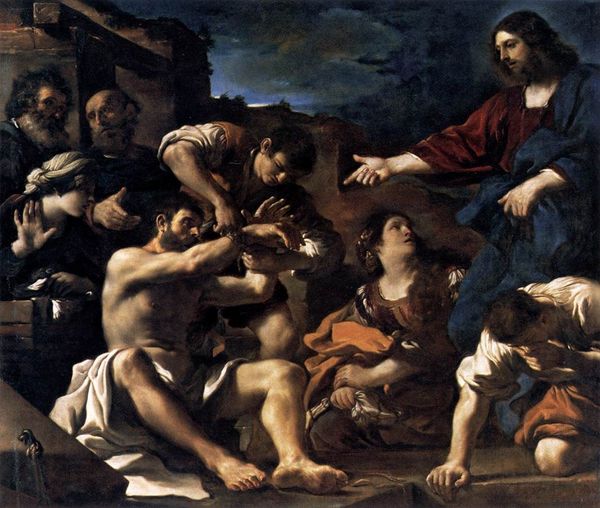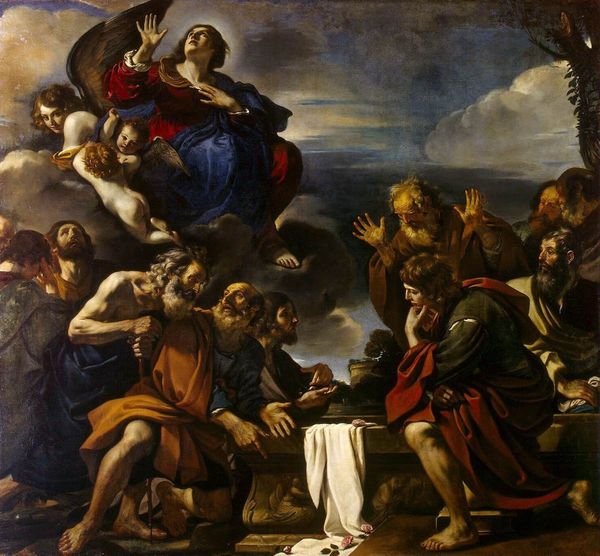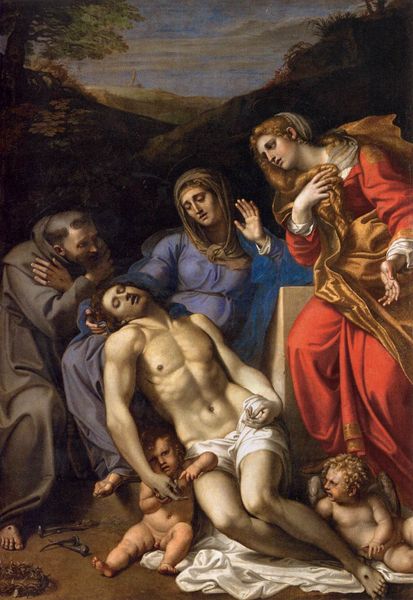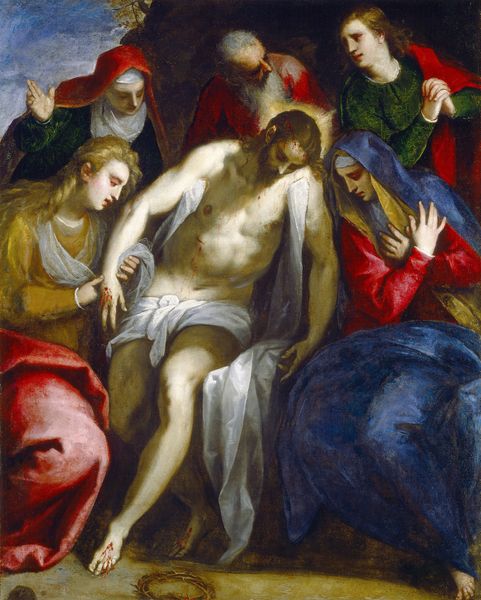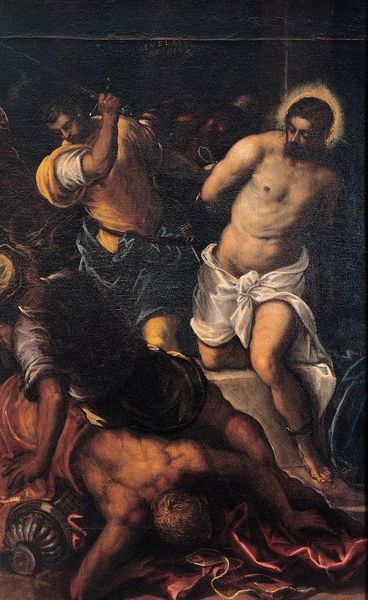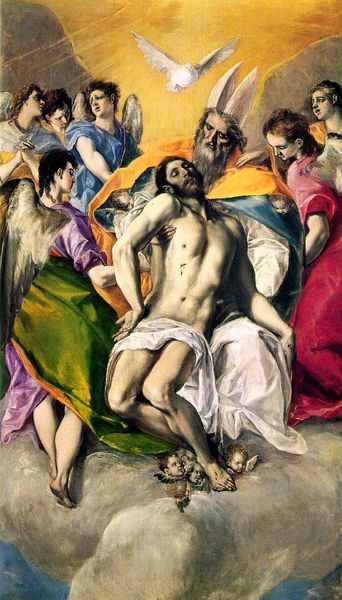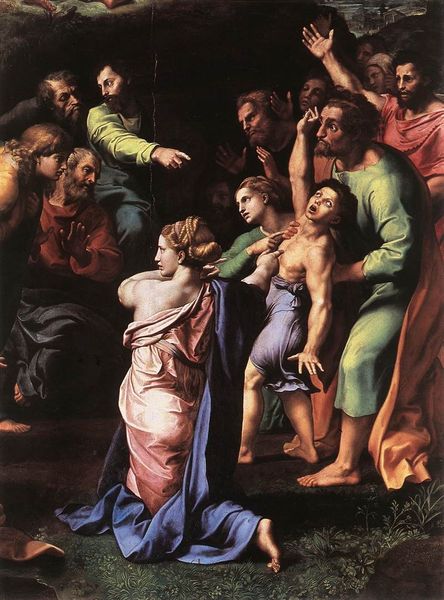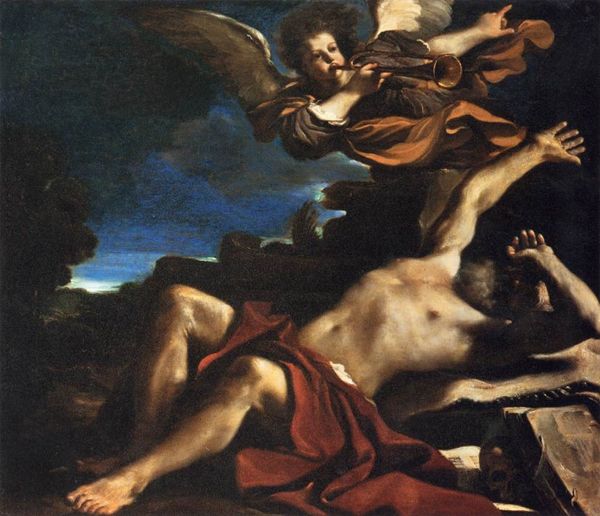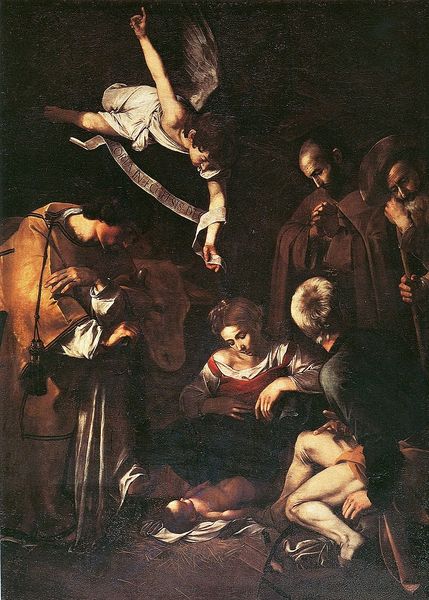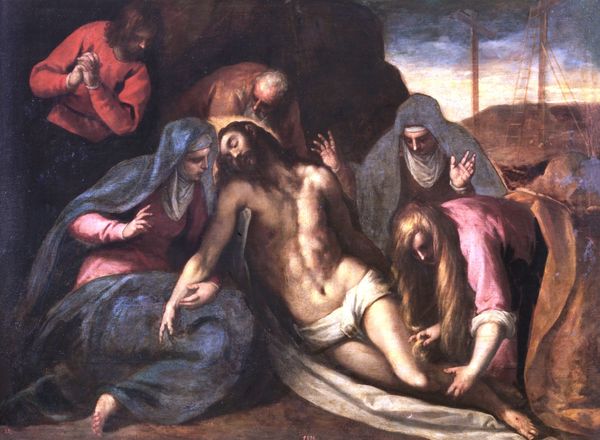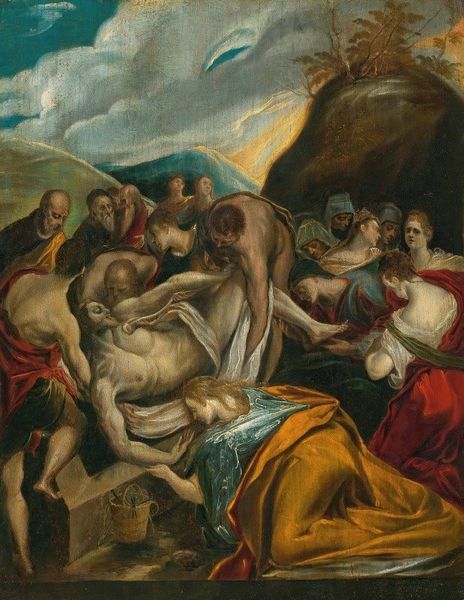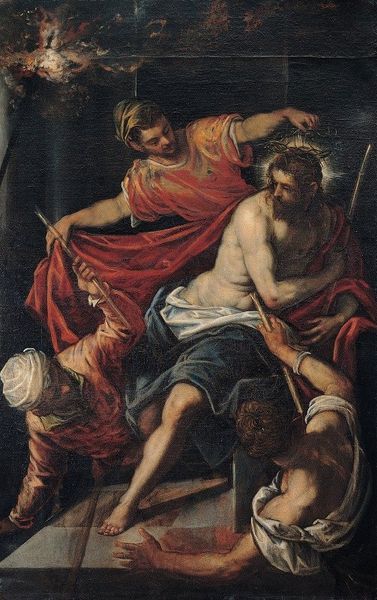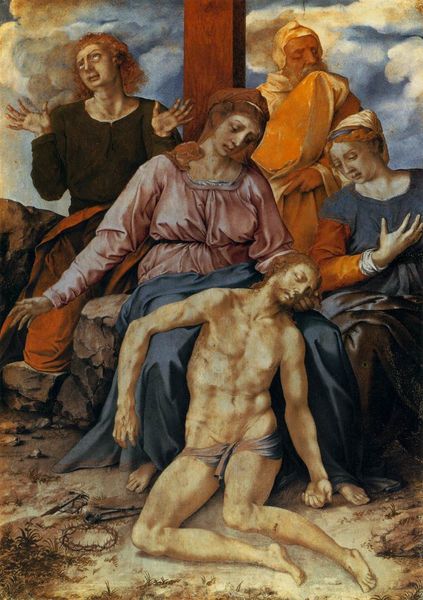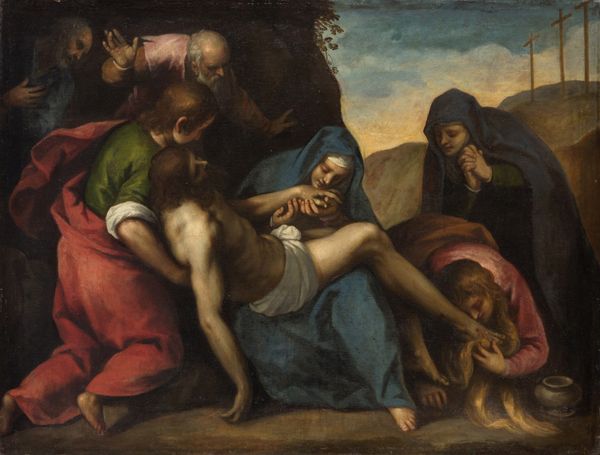
painting, oil-paint
#
baroque
#
painting
#
oil-paint
#
figuration
#
oil painting
#
history-painting
#
realism
Copyright: Public domain
Editor: This painting, *The Martyrdom of St. Peter* by Guercino, created around 1619 with oil paint, is truly striking. I’m immediately captivated by the emotional intensity; it feels like I’m witnessing a pivotal moment. What do you see in this piece? Curator: For me, the painting speaks volumes about the power of the Church in shaping narratives. Think about it – Guercino is commissioned to create a work depicting a foundational story of the Catholic faith. The dramatic Baroque style, with its emphasis on emotion and dynamism, becomes a powerful tool to engage the viewer, almost like a form of visual propaganda reinforcing religious authority. How does the painting’s composition strike you in relation to that idea? Editor: That's interesting. Now that you mention it, the placement of the figures, with St. Peter front and center, forces you to confront the violence being enacted upon him. Also, is that a cross Peter will be crucified on? What could it signify about this scene? Curator: Precisely. The cross looms, almost theatrically, underscoring the idea of sacrifice and obedience. The image had a purpose; to create resonance within its socio-religious context. In that era, such martyrdom served to solidify belief among a vast population. Editor: That makes sense. It’s not just a depiction of history, but a reinforcement of power through artistic interpretation. Thinking about the image, you also begin to wonder what impact would the artist desire for audiences viewing it today? Curator: Absolutely. The image persists as a testament to art's historical power. Studying it prompts us to see how art shapes discourse beyond aesthetic appreciation. Editor: This conversation shifted my perspective and now makes me wonder how artworks get imbued with diverse historical roles.
Comments
No comments
Be the first to comment and join the conversation on the ultimate creative platform.
